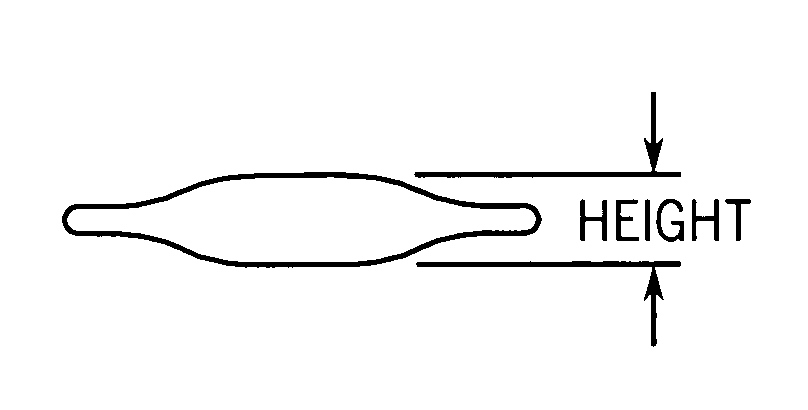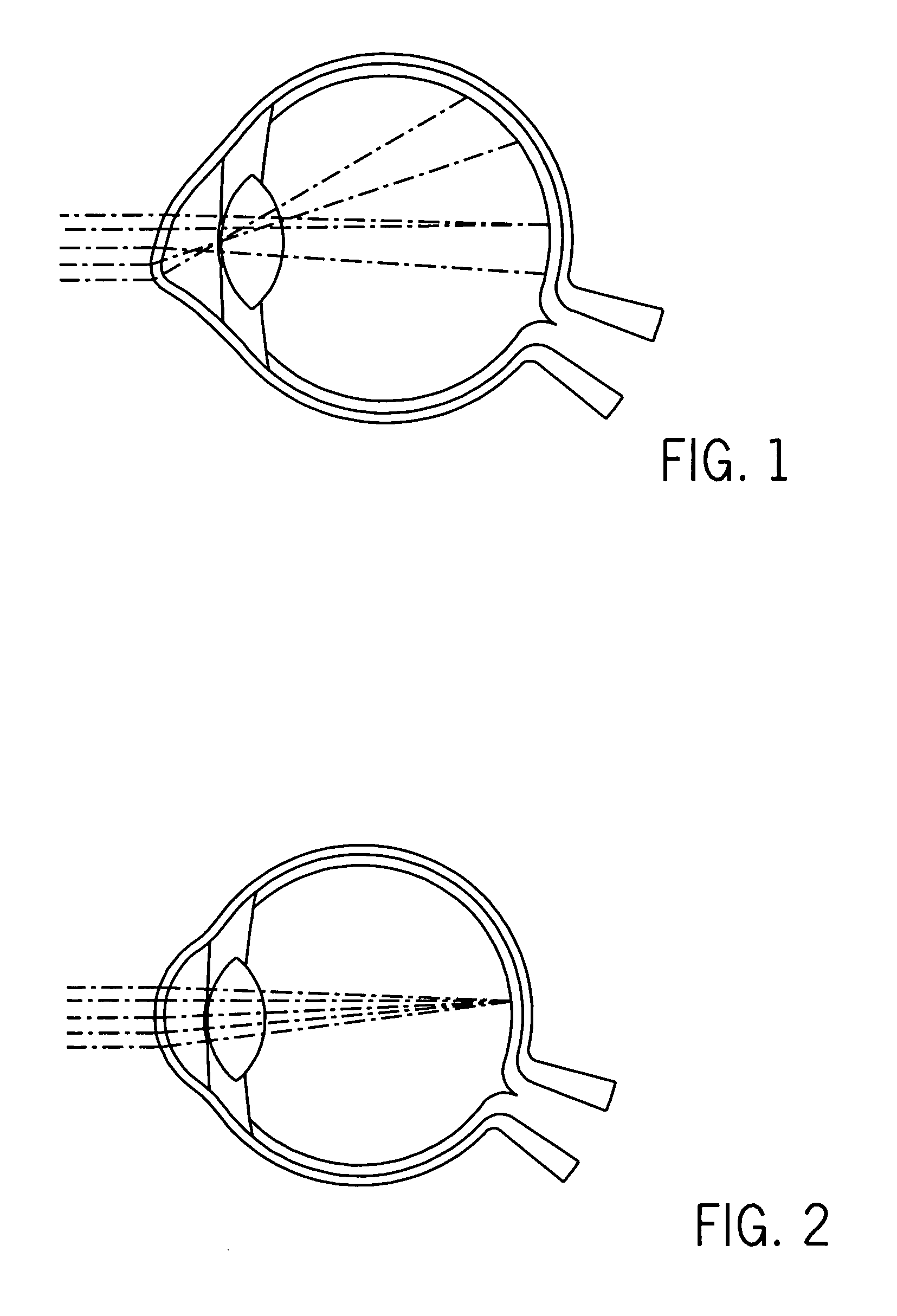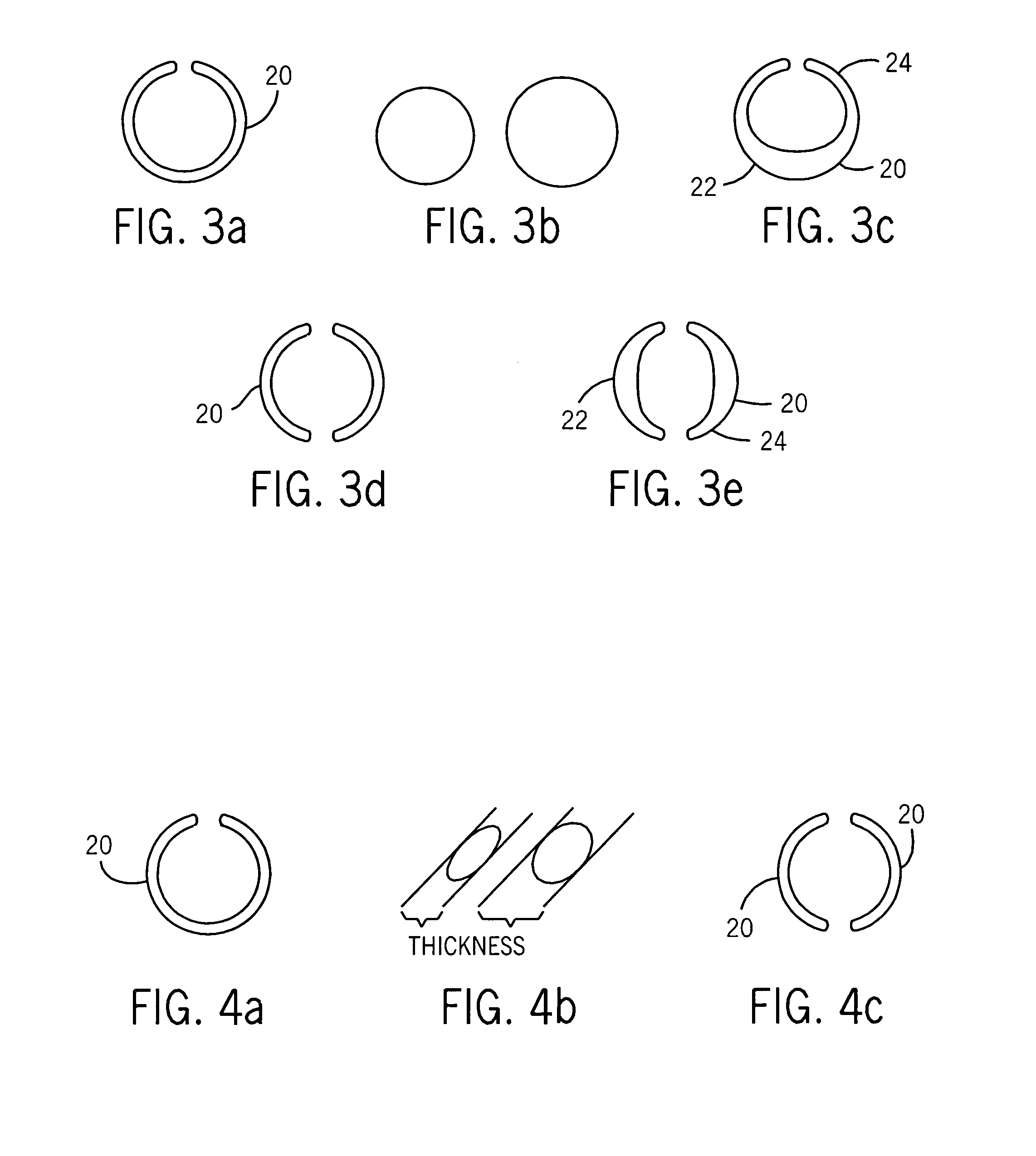Pre-formed intrastromal corneal insert for corneal abnormalities or dystrophies
a corneal insert and intrastromal technology, applied in the field of inserts, can solve the problems of abnormal thickness of cornea, severe vision problems, and significant weakened corneal structure, and achieve the effect of low light scattering design
- Summary
- Abstract
- Description
- Claims
- Application Information
AI Technical Summary
Benefits of technology
Problems solved by technology
Method used
Image
Examples
Embodiment Construction
[0036]In order to make a smaller diameter intracorneal ring (in the range of less than 6.5 millimeters) work as an effective device, a compromise is required between the flattening and reshaping effect to the cornea when placed within the optical zone and a ring of a low light scattering design. Intracorneal ring segments constructed in accordance with this compromise address both the visual and physiological issues caused by Keratoconus. In particular, the present invention serves to provide minimal light diffraction while flattening a bulbous cornea into a more naturally reshaped cornea.
[0037]As used herein, certain terms may have the following defined meanings. As used in the specification and claims, the singular form “a,”“an” and “the” include plural references unless the context clearly dictates otherwise. For example, the term “a segment” includes a plurality of segments, including mixtures thereof. It should also be noted that the term “ring portion” can refer to a segment o...
PUM
 Login to View More
Login to View More Abstract
Description
Claims
Application Information
 Login to View More
Login to View More - R&D
- Intellectual Property
- Life Sciences
- Materials
- Tech Scout
- Unparalleled Data Quality
- Higher Quality Content
- 60% Fewer Hallucinations
Browse by: Latest US Patents, China's latest patents, Technical Efficacy Thesaurus, Application Domain, Technology Topic, Popular Technical Reports.
© 2025 PatSnap. All rights reserved.Legal|Privacy policy|Modern Slavery Act Transparency Statement|Sitemap|About US| Contact US: help@patsnap.com



